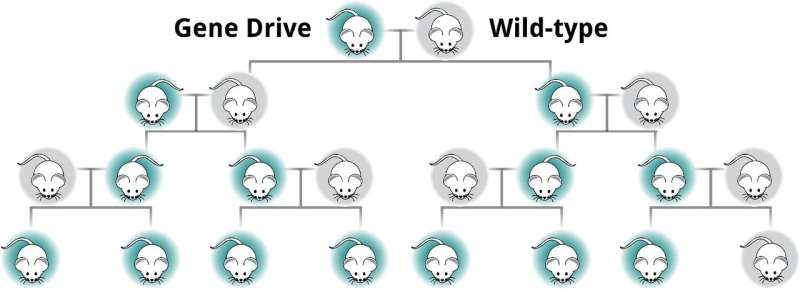Gene drive technologies for ecosystem conservation: Use with care

Scientists working in the vanguard of new genetic technologies have issued a cautionary call to ensure that possible applications in conservation will only affect local populations. In an article publishing 16 November in the open access journal PLOS Biology, Neil Gemmell from the University of Otago, New Zealand, and Kevin Esvelt of MIT examine the possible consequences of the accidental spread of existing self-propagating gene drive systems.
New Zealand is considering genetic technologies to help eliminate rats, mice, stoats and possums. A gene drive system promotes the inheritance of a particular genetic variant to increase its frequency in a population, which would require fewer invasive organisms to be released in order to spread infertility and ultimately eliminate the pest population.
Although Professor Esvelt was among the scientists who first described how gene drive could be accomplished by making CRISPR genome editing heritable, in the new article the authors say that the original suggestion that self-propagating gene drive systems might be suitable for conservation "was a mistake."
Professor Gemmell believes there is still "huge merit" in using genetic technologies for conservation work. However, he says that standard self-propagating versions "may be uncontrollable" and therefore unsuited to conservation.
"The bottom line is that making a standard, self-propagating CRISPR-based gene drive system is likely equivalent to creating a new, highly invasive species - both will likely spread to any ecosystem in which they are viable, possibly causing ecological change."
Introducing such a system "without the permission of every other country harbouring the target species would be highly irresponsible," they say. "It would be a profound tragedy if New Zealanders - or anyone else - inadvertently caused an international incident and the consequent loss of public confidence in scientists and governance prevented us from realizing other benefits of biotechnology."
"New Zealand's ambitious goal to eradicate mammalian pests is already generating global interest, in part because there are strong lobbying groups advocating for and against the use of gene editing in a conservation framework," Professor Gemmell says. "The New Zealand initiative provides an obvious focal point for this emerging debate. But the topic has global relevance and context because gene drives have been proposed for use in other locations where mammalian invaders are a conservation issue. This study calls for an open discussion about technologies considered for the New Zealand context that could readily have global ramifications."
More information: Esvelt KM, Gemmell NJ (2017) Conservation demands safe gene drive. PLoS Biol 15(11): e2003850. doi.org/10.1371/journal.pbio.2003850
Journal information: PLoS Biology
Provided by Public Library of Science



















